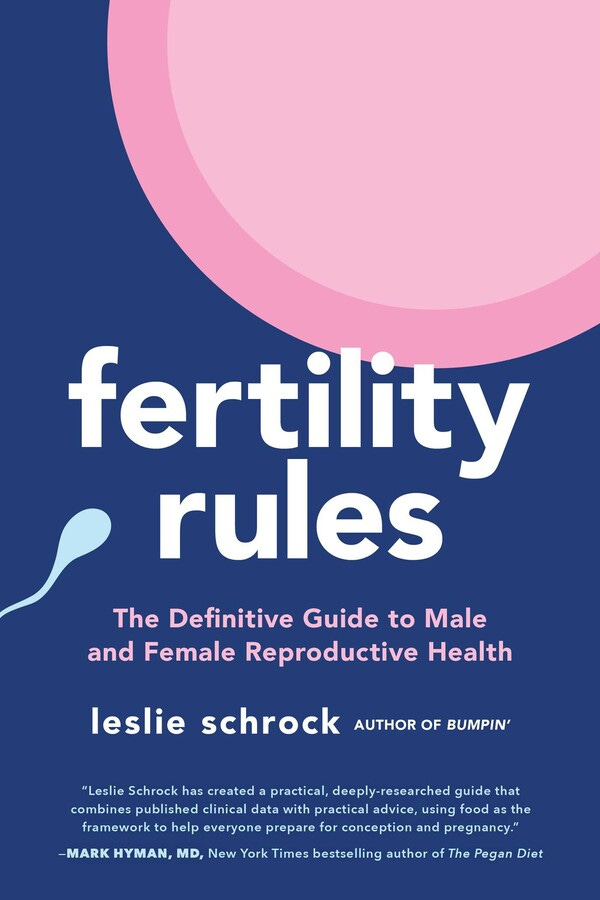📧 Newsletter tl;dr
💁♀️ Who am I: 2x author, 2x boy mom, angel investor, recovering entrepreneur, straight-talking research wonk
📖 Who should read: Fertility/pregnancy enthusiasts and startup fans
🗓 How often will it hit my inbox? 1x/week
🔬 What will it feature: Reproductive health hacks and facts, interviews with experts, startup features, things I love, weird gifs
👋 Why, hello there
If you’re new to me, authoring two books was personal. I wrote Bumpin’ while pregnant with son #1 as nothing spoke to me as a working parent, nor did any books go deep on hard yet common aspects of pregnancy (miscarriage! diastasis recti! depression!) After a decade+ investing in and advising health companies, if I was confused, what was it like for everyone else?
Three miscarriages later, I have two sons, 18 months and 3.5 going on 30, but no diagnosis. After Bumpin’s release, I heard from many readers who encountered similar challenges and, like me, spent long hours analyzing what they could have done differently. So I went on a quest to assemble everything I wish I’d known before trying to conceive. The culmination of that pursuit is my new book, Fertility Rules, coming June 6.
👀 Fertility Rules sneak peek: it’s not just for women
Male factor is the cause of around half of fertility issues. Yet 25% of men aren’t even examined during an infertility exploration. We’ll go into the myriad reasons why in a future edition, but the result is that women act as treatment surrogates for men, undergoing lengthy, invasive, expensive, and in some cases, unnecessary procedures when all that may be required is for their partner to get a semen analysis and physical exam then make basic lifestyle tweaks.
Beyond giving men a nudge toward their doctor’s office, Fertility Rules provides the sex ed you never got, evidence-backed ways to improve your fertility, and how to take action, whether that’s making a baby, fertility testing and preservation, or infertility treatment. Edited by reproductive health and subject matter experts across exercise, supplements, mental health, and nutrition, it provides holistic, practical advice that anyone can follow.
In the coming months, I’ll preview content from the book and feature interviews with experts. If there are topics you’d like to explore, email me with questions or comments anytime: lesliezschrock@gmail.com.
📖 What I’m reading
🧫 Choice of genetics lab may impact euploid blastocyst and live birth rates Fertility & Sterility
📈 Average age of first-time parents over the past 250,000 years Science Advances
🧠 Parental leave benefits parents’ mental health The Lancet
🌅 Can you become a morning person? Inverse
👶 Born that way: how infant temperament influences our lives Aeon
👯 How our microbiome is shaped by family, friends, and neighbors Nature
🍽 How Americans got everything about food entirely backward The Ringer
👐 Midwives making a comeback
Midwifery goes back to 40,000 B.C. During the Middle Ages, things took a not-so-stellar turn, as midwives were deemed heretics and witches and sometimes burned for their perceived transgressions. This reputation unfairly tainted the profession for centuries, and it’s only in the past 100 years that we’ve seen a resurgence in western countries. In the UK, all planned births are attended by midwives. In the US, they’re present at just 8%. But this may be changing.
Oula raised a $19.1M Series A (for those not in startup land, that’s typically a second round of venture capital funding) to redesign maternity care in their beautiful clinics. Pertinent here, midwives are at the center of care teams, and work together with an ob-gyn. In the US, midwives have a Master of Science in Nursing, or are Registered Nurses and focus mostly on low-risk pregnancies and births. They provide more holistic care and longer appointments, and the positive effects of a midwife’s presence—from fewer interventions and tearing during birth to improved breastfeeding outcomes—are proven. Oula’s clinics are only in NYC right now, but hopefully, this marks the return of midwives—and a move toward more patient-centered prenatal care.
🧄 A thing that makes my life better
Not an ad, just a product I like
I love to cook and I love garlic (some studies suggest garlic boosts male fertility). Sometimes I buy the pre-chopped varietal (don’t come at me, culinary enthusiasts). Other times I use this hack for peeling and this garlic zoomer which minces in approximately 2.5 seconds. My older son digs it too as it’s as fun as it looks.









